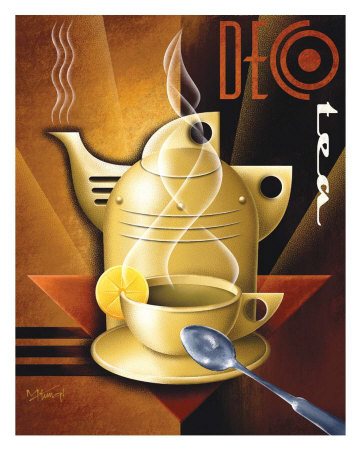 How Super Is Your Tea?
How Super Is Your Tea?by Lindsey Goodwin
Manufacturers and sellers often tout teas and tisanes, particularly greens, whites, rooibos and yerba mate, as superfoods. However, teas and tisanes have yet to gain the same foothold in the North American market as better-known superfoods, such as now-ubiquitous pomegranates and blueberries.
To sort out what the superfood fad means to the tea business, World Tea News (WTN) looks at other superfoods’ popularity and how superfood consciousness has boosted tea's mainstream appeal.
Superfoods 101
Although there is no standard definition for superfoods, they are generally recognized as foods that are particularly high in antioxidants, vitamins and minerals. They are not new foods, but current diet trends have put the spotlight on them and are encouraging a rapidly growing number of consumers to try anything and everything that includes them, said nutritionist Abbe Gorberg of Nutrition Counseling Services.
Gorberg said high levels of antioxidants are reputed to fight oxidation of cells by free radicals, repair damaged cells and even help prevent cardiovascular disease, cancer, infections and weakened immunity.
The primary reason for superfoods’ popularity is the perceived health benefit, sources agreed, but the most popular superfoods are those that are most palatable to the mainstream consumer. This trend works to the advantage of tea makers and sellers who offer teas blended with naturally sweet superfruits and other readily palatable superfoods, because these increase the perceived health benefit while giving teas more accessible flavors.
'Double Benefits'
Gorberg said most people get adequate antioxidants, vitamins and minerals in their diets, but people who are very diet-focused or want to supplement unhealthy diets often seek products with superfoods as ingredients.
Tea-industry sources said their customers believe superfood-tea blends provide “double benefits” compared to tea and other superfoods alone, and that this perception fuels sales.
The Republic of Tea tested the market early with its pomegranate and blueberry green teas in 2005, now among its most popular products. Since then, the company expanded its superfruit line to include acerola cherry, acai, black raspberry and goji berry, said Marideth Post, the Republic of Tea’s so-called minister of enlightenment.
Likewise, since its launch in March 2007, Fully Loaded Tea has seen strong sales growth in superfood-tea blends with unusual ingredients such as lingonberries, tomato and seabuckthorn berries, as well as with old standards like strawberry and citrus. Co-founder Katya Popoff said growth is strongest in green tea-superfood blends, which customers perceive as the healthiest.
Honest Tea’s product development manager Mike Petrone said his team includes superfruits in blends whenever possible. “Why would a consumer not want an extra health benefit?” he asked. “Superfoods boost a product above its counterpart on the shelf.”
Clearly growth is strong, but are the benefits just a perception?
There isn't much research yet, but the answer may depend on ingredients. Unlike many popular superfood products, superfood-tea blends typically use actual foods rather than extracts. The New York Times recently called into question the efficacy of extracts, but not of superfoods themselves. A recent Purdue study suggested that vitamin C (which is naturally occurring in superfruits) increases catechin absorption from teas. Also, sugarless superfruit teas can provide benefits while avoiding superfruits' high sugar levels.
Super Blends
For a tea and another superfood to blend, they have to taste, well, super. To reach the mainstream, a trendy food and beverage product has to strike a balance between familiar and novel, said Petrone. Familiar flavors can be prominently featured in a blend, while more obscure flavors like creamy, citrusy cupuacu or tart yumberry fare better in lesser roles in the flavor profile.
Sources indicated that “familiar” flavors would include pomegranate and blueberry, and may soon include acai, which has a loyal following. They said their sales of pomegranate teas show no signs of flagging, despite the increased popularity of other superfoods such as goji berry, mangosteen and black raspberry. Post added, “Superfruits have big, bold, rich flavors that pair well with tea and are very well-received on all levels from novice tea drinker to aficionado,” making superfruit teas ideal additions to tea room menus.
(from World Tea News, 9/18/08)







No comments:
Post a Comment